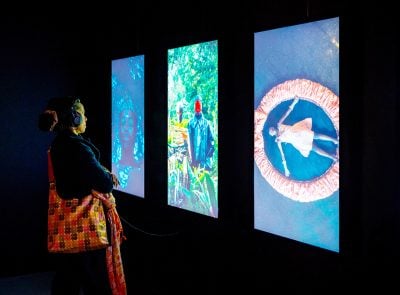From basket case to regional powerhouse, Africa – the last bastion of growth – has exceeded economic expectations over the last 20 years. Global leaders, analysts and economists alike, buoyed by increasing GDP, a burgeoning middle class and promising trends towards democratisation have adopted the “Africa Rising” rhetoric to illustrate the continent’s transformation.
Africa became an investor’s dream: low wages and the promise of huge returns saw funds and financiers clawing their way onto the continent. Private equity investments in Africa blew up, and country after country began issuing Eurobonds at ever increasing volumes. Investors’ appetites could not be satiated.
But just as the Africa Rising sentiment started to take hold, cracks began to appear. According to the World Bank, regional growth fell to just 3% in 2015 and is predicted to decelerate in 2016 with low commodity prices, tight financing conditions, droughts and a global economic slowdown to blame.
While some countries have benefitted from strong growth in recent years, wealth hasn’t trickled down to the wider population. According to a report published by the World Bank in March, while the proportion of people living in poverty in Africa has decreased since 1990, the absolute number has increased.
The Bank’s most optimistic estimate is that the number rose from 280m in 1990 to 330m in 2012. According to the report, this is due, in part, to the huge population growth the continent has seen over the last few decades.
The current context
“These days It is too simplistic to continue to use the ‘Africa rising’ narrative,” says Yvonne Ike, head of sub-Saharan Africa at Bank of America Merrill Lynch based in London.
“What I would say is that, given current economic conditions, the divergent performance and outlook of African economies is becoming more evident.
In fact, some of Africa’s countries are doing very well in the current context. Ethiopia, Rwanda and Côte d’Ivoire stand out as successful, but in Nigeria and South Africa, growth is stalling for different reasons. There needs to be a recalibration of what we mean by ‘Africa Rising’,” she says.
Nigeria and South Africa – the continent’s largest economies – have recently come under the spotlight as their economies have slumped. A global commodity price meltdown has taken its toll on Nigeria’s oil sector, while diminishing demand from China, and controversial policy around the mining sector has driven South Africa’s growth to a halt.
Both countries have seen their currencies fall against the dollar in the last 18 months and inflation has risen, putting pressure on the buying power of locals and governments alike.
At the same time, unemployment is on the rise: in South Africa, unemployment has risen to an unpalatable 27%, which disproportionately affects the country’s youth; while in Nigeria, unemployment in the second quarter rose to 13.3% from 12.1% a year earlier, according to the Nigerian National Bureau of Statistics.
The situation in South Africa is particularly bad, given the huge number of protests by the country’s vast student population over proposed increases in university fees. Poorer black students may find affordable education out of reach as jobs become more difficult to come by.
Negative trends in South Africa and Nigeria have turned some investors off Africa much more broadly. As a result, foreign direct investment into the continent has been slowing, falling 31% between 2014 and 2015 to $38bn. In Nigeria, FDI fell by 27% to $3.4bn in 2015 and for South Africa the situation was worse: down 74% to $1.5bn in 2015. Capital market activity has also slowed with no sovereign Eurobond issuance out of Africa so far this year.
Meanwhile, yields on existing international and local debt are creeping up as investors see the continent as riskier. “South Africa and Nigeria were, in some ways, the countries that epitomised the ‘Africa Rising’ story,” says Ike. “Now, the fact that both economies are currently facing challenges does not mean that all of Africa is.
“Importantly, both are going through an interesting point in their cycle that presents opportunities for bullish investors who take the time to understand the local environment and dynamics.
“But the challenge is that some investors still see Africa as one country – this approach will lead to more negative perceptions on what is happening on the continent. But Africa is much, much more than that. There are some safe havens in the region that are worthy of continued investment,” she says.
While those countries in Africa that heavily rely on commodities have seen their economies stutter, East Africa, which in general boasts diversified economies and political stability, is still doing well. Kenya, for instance is still going strong recording the fastest increase in FDI in 2015 at 47% with strong GDP growth at 5.6% in the same year which is expected to rise to 6% for 2016.
Ethiopia has also emerged as one of Africa’s stronger economies, with an average GDP growth of 11% over the last ten years. Tanzania is on target to reach GDP growth of 7.2%, in part due to the boom in business brought on by Aliko Dangote’s new cement factory in the country.
The longer view
While there are pockets of success and productivity in the continent, investors taking a near-term view to hold off on Africa are making a rational decision, believes Ike. “Smart investors have their eye on the situation and they will go in as they see opportunities.
At BAML, like others who believe in the continent, we have a long-term positive view on the market and we will continue to do business in the region. We also understand that we will need to be flexible, and adapt our solutions as other challenges across the continent arise,” she says.
“What’s needed is a true understanding of the nuances that exist between African countries and trying times such as these can help us understand these differences. That can only be a good thing.”
Kanika Saigal
Want to continue reading? Subscribe today.
You've read all your free articles for this month! Subscribe now to enjoy full access to our content.
Digital Monthly
£8.00 / month
Receive full unlimited access to our articles, opinions, podcasts and more.
Digital Yearly
£70.00 / year
Our best value offer - save £26 and gain access to all of our digital content for an entire year!
 Sign in with Google
Sign in with Google 


